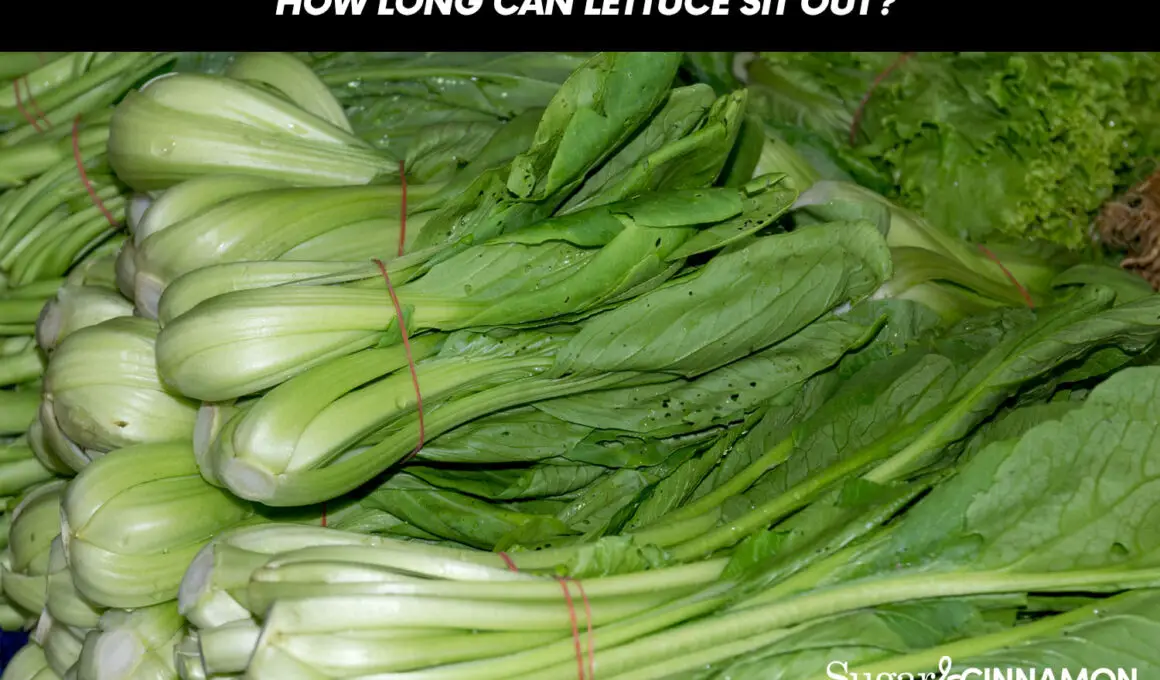Table of Contents Show
Lettuce is known for going bad quickly, which can ruin your plans for a great salad dish. It’s safer and more convenient to know how long your lettuce can last, especially if you eat it frequently.
Quick answer: Most lettuce varieties can be left out at room temperature for about two hours. We recommend that you refrigerate lettuce if you are not going to eat it within two hours.
What we have is an article that provides information on how long your lettuce can last, how to preserve lettuce, signs your lettuce has gone bad, and tips to keep them fresh.
By now, you should be ready to dive into what we have prepared for you.
How Long Can Lettuce Sit Out?
The amount of time your lettuce can last in the fridge or at room temperature depends on its variety. There are over 16 varieties of lettuce available. We’ve compiled a list of the top four most popular lettuce varieties:
| Lettuce Variety | Room Temperature | Fridge | Freezer |
| Iceberg lettuce | 2 hours | 10-20 days | 6 months |
| Romaine lettuce | 2 hours | 10-20 days | 6 months |
| Butterhead lettuce | 2 hours | 5-10 days | 6 months |
| Loose-leaf lettuce | 2 hours | 5-10 days | 6 months |
Most lettuce varieties can be left out for about two hours at room temperature and still be safe for consumption. If you are not going to consume your lettuce right away, it is best to refrigerate it immediately to keep it safe for consumption.
Also, the amount of time your lettuce can sit out depends on how fresh it was before the purchase.
How To Store Lettuce
The best way to keep lettuce fresh is to keep it refrigerated. You should only freeze lettuce if you purchased it in bulk and will not be using it for an extended period.
How to refrigerate lettuce
When storing lettuce in the refrigerator, follow these steps:
- Remove the core of the lettuce and cut it into pieces. It can be shredded or left in cups.
- In a salad spinner or bowl, soak the lettuce in water and vinegar to remove dirt and sand. The vinegar will not change the flavor of your lettuce; it will simply keep it crisp and fresh.
- Place your lettuce in a Tupperware or paper towel-lined container. Excess moisture will be absorbed by these paper towels.
- Close the container with its lid and cover the lettuce with another layer of paper towels.
- Place the container in your refrigerator.
How to freeze lettuce
These are the steps to take when freezing lettuce:
- Remove the lettuce from the stem and head. Remove any wilted or dead leaves from the bunch.
- After washing the leaves, pat them dry with a salad spinner or a dry towel. The leaves must be dry before transferring them to the freezer; otherwise, they will become soggy after a while in the fridge.
- Place your lettuce in a zip-top bag and place it in the freezer. Ensure that the freezer bag is lined with paper towels and that it is not placed beneath a container.
4 Signs Lettuce Has Gone Bad
Look out for the following signs to determine if your lettuce has gone bad or is on the way there:
- Signs of discoloration are indications that your lettuce has gone bad.
- Look for wilting leaves that are brown or black with spots. Note that not all wilting lettuce leaves are bad.
- If the lettuce leaves are soft and slimy, they have gone bad.
- Check for foul odors from the leaves. Fresh lettuce has a neutral smell.
If you notice any of these signs, discard the lettuce immediately. You are at risk of food poisoning if they are consumed. Food poisoning can cause abdominal cramps, fever and chills, headache, nausea and vomiting, and physical weakness. If you suspect food poisoning, go to the hospital right away.
Tips To Keep Your Lettuce Fresh
Don’t let your lettuce go bad by following these tips:
- If your lettuce begins to wilt, submerge it in ice water to revive it and extend its shelf life.
- Avoid washing and chopping off the head of your lettuce if you’re not ready to use it.
- Separate wilting lettuce from fresh lettuce to keep the other leaves fresh and crispy.
- Avoid storing lettuce in places where it will be squished; otherwise, it will go bad. Also, never store them near fruits like bananas, peaches, apples, avocados, or pears because they will wilt quickly.
- Purchase fresh lettuce from the grocery store so it will stay fresh longer. Look out for fresh heads or stems, and never buy one that is turning brown. Check that the leaves are not wilting.
- Avoid storing lettuce in the fridge or freezer for an extended period because the nutrients will deplete.
- Remember to replace wet paper towels with new ones if your lettuce is stored in a refrigerator or freezer.
Final Note
Since lettuce is one of the most popular vegetables consumed in the United States, chances are you will always have some in your kitchen.
You can count on the tips we have provided for you to help your lettuce stay fresh. Have you always been good at preserving your lettuce, or did any of our tips help? Let us know in the comment section.













